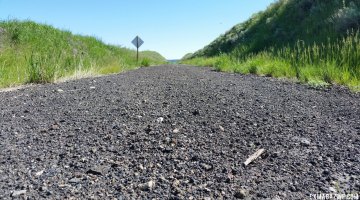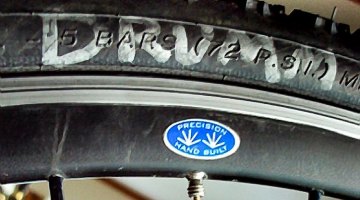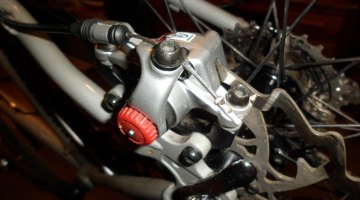Sometimes it takes faithful pit help to keep a racer in contention. This week’s Gut-Wrenching Mechanical Mondays feature describes how to do a down and dirty wash with a pressure hose to get a muddy bike back and ready for action quickly.
This is the eighth installment in our series of from-the-crew-pits tips. Some will be straight-forward, others more involved, but they’ll all help you to keep your cyclocross bike humming smoothly along. Catch up on the last article about raising your hoods for better control.
by Dave Drumm
So your buddy asked you to pit for him during the Elite race. Just your luck. It’s muddy as hell and the conditions are getting worse; you’re guaranteed to need to do a bike change or two during the race. But how do you get a filthy bike clean and back to the pit ready to be handed off in just a few minutes?
At many of the big races, pressure washers are provided for mechanic use, a major bonus that you should use to your advantage. As soon as your buddy hands off the bike and is back underway, throw it on your shoulder and run like hell to the pressure washer. Make sure that, as you’re running through the pit, you’re not impeding the change process for other racers and mechanics.
When you arrive at the wash station there should be stage fencing or at least something to lean the bike against. If there is fencing, hang the front end of the bike by placing one side of the handlebar over the top of the fence. The front wheel will be elevated and the bike should be stable enough to blast clean. Start with the pressure wand from the top and blast from left to right, top to bottom. Be sure to not spray the pressurized water directly at anything containing a bearing. Always spray delicate areas from an angle. The areas to concentrate on are rider points of contact–handlebars, hoods and saddle–and then the brakes, chainstays and finally the drivetrain. You want to make sure you blast away all of the muck from the brakes and drivetrain–blast the cassette from close range from the top, giving a few quick back spins of the crank. A couple of quick passes is all it takes. Drop the wand and turn the bike around and repeat the process on the non-drive side, again using a top to bottom motion, moving the wand back and forth as you work your way down.
The whole process should take less than a minute and you will be surprised at how clean the bike will appear. During the race you want a quick clean–not a showroom shine. After the bike is muck-free, hand the wand off to the next mechanic, shoulder the bike and run as fast as you can back to the pits. If you have done well, you should be in the pit before your rider comes by the pit for the second time, on the same lap.
If you have time, and you should, dry the handlebars and saddle with a rag. I always keep a hyper-absorbent mini-towel in my back pocket while working the pit. Drying the contact points will ensure that the rider has a non=slip surface to grab. If you’re lucky, you will have to only do one wash during the race, but if it’s a real mudfest, you’ll be a pro after doing it two times a lap for the full hour.





























